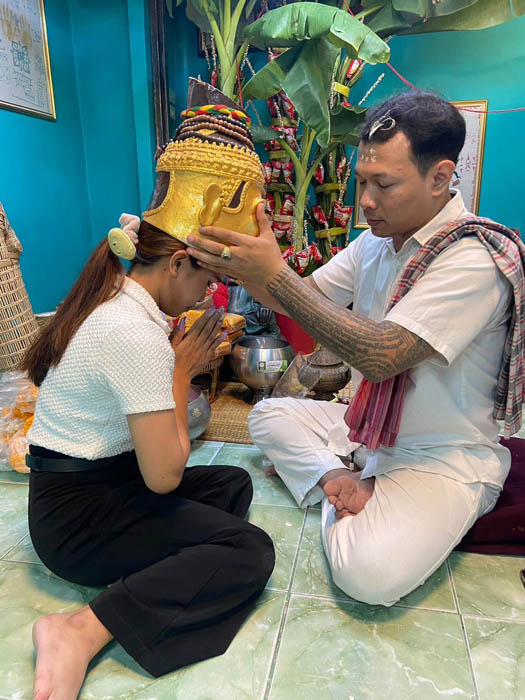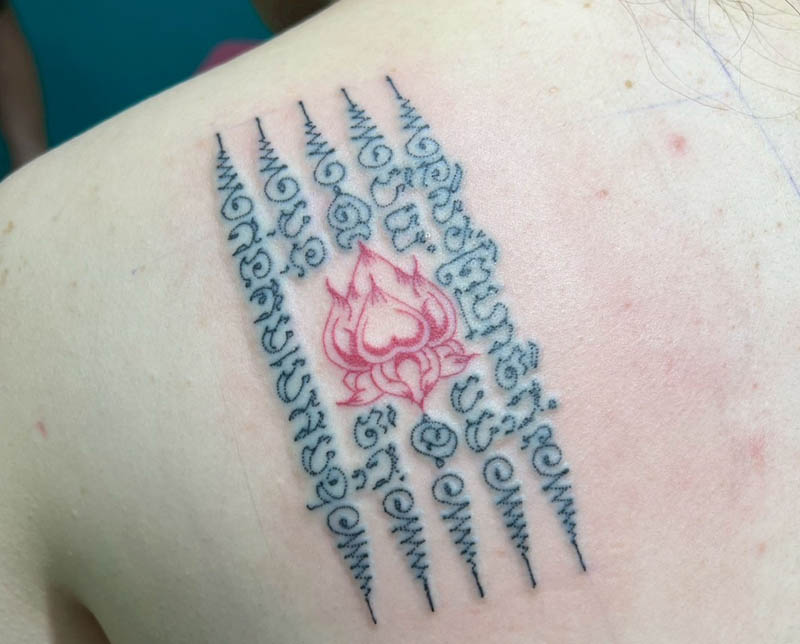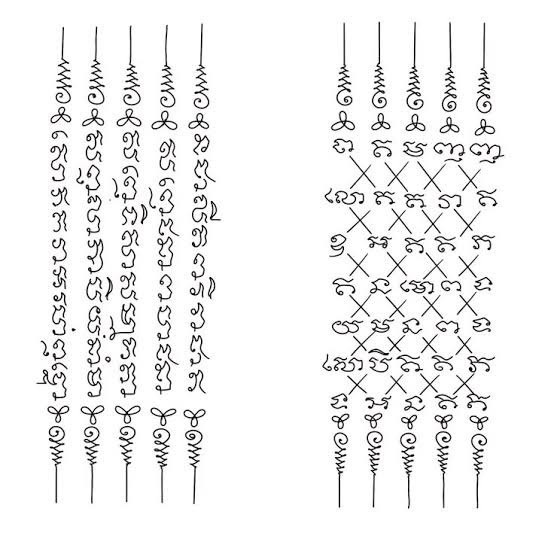

Hah Taew (The Five-Row Yantra) : A Formal Overview
Yant Hah Taew The Five-Row Yantra is a sacred Thai tattoo tradition consisting of five horizontal rows of mystical scripts or symbols, each imbued with distinct spiritual powers. Rooted in Thai esotericism, it synthesizes Buddhist mantra, Brahmanic-Hindu tantra, and indigenous animist beliefs.
Table of Contents
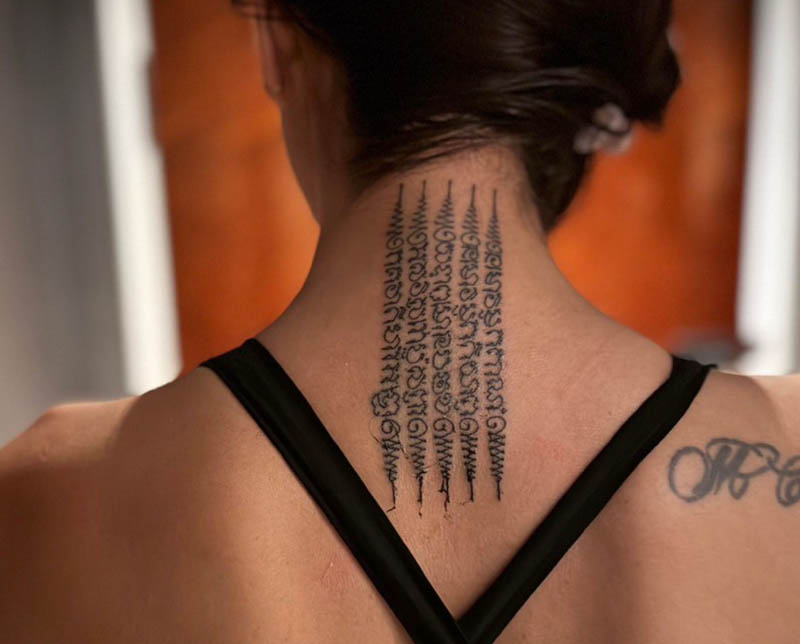
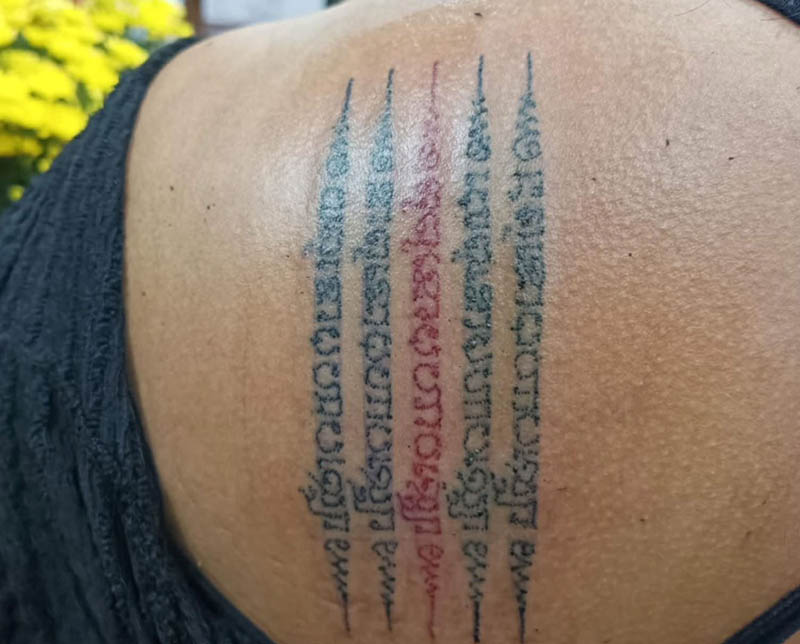
Hah Taew Historical Development
1. Pre-Indian Influence Era (Before 12th Buddhist Century)
Indigenous communities in Suvarnabhumi practiced tattooing for:
Social status markers
- Animist protection rites (e.g., ancestral spirit communion)
- Early designs featured sacred fauna (e.g., Nāga, Garuda) or rudimentary numerical symbols.
2. Indianization Period (12th–18th Buddhist Century)
With the influx of Indian cosmology via trade and religion, Thai occultism integrated:
- Tantric and Atharvavedic mantras.
- Khmer-Pallava scripts (อักขระขอม), standardized by Brahmin sages.
- Vajrayana Buddhist incantations (e.g., Jinapañjara Gāthā).
Military applications: Early row-based yantras appeared in war treatises (Tamra Phichai Songkhram) for battlefield invulnerability.
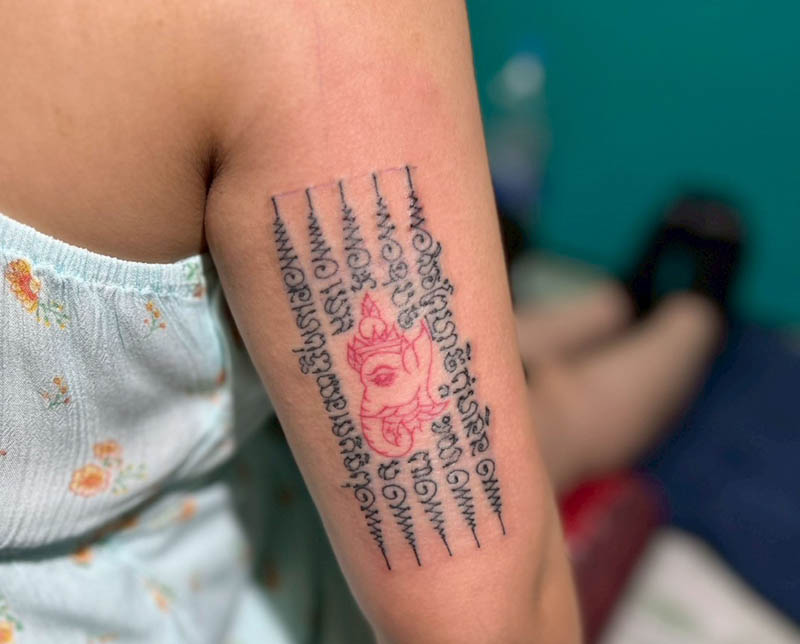
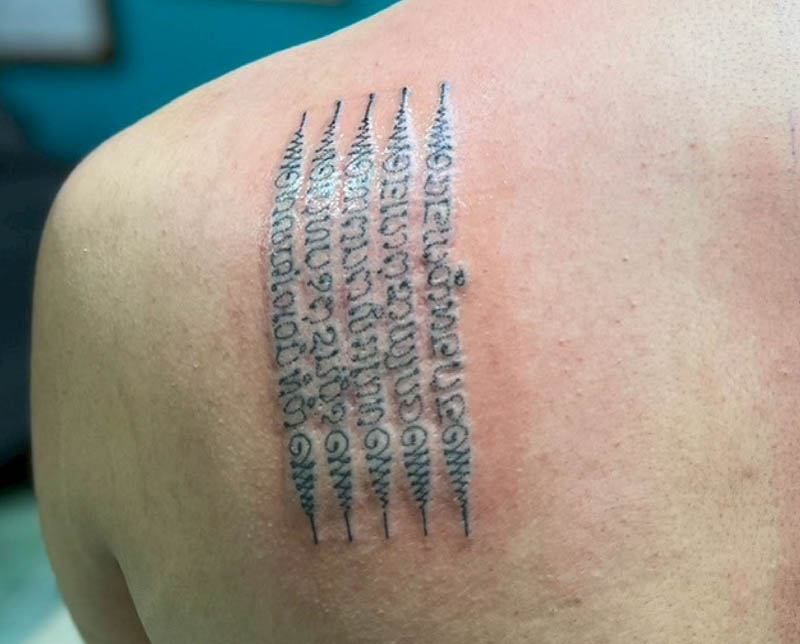
3. Sukhothai–Ayutthaya Period (19th–23rd Buddhist Century)
Sukhothai Era:
- Evidenced by stone inscriptions using yant numerals for city protection.
- Monks tattooed villagers for healing and anti-sorcery.
- Ayutthaya Era: Popularized among warriors, notably under King Naresuan’s campaigns.
- Literary references: Khun Chang Khun Phaen (hero’s tattoo for evasion).
- Western accounts: La Loubère’s 17th-century records note Siamese tattoos for “bulletproof” properties.
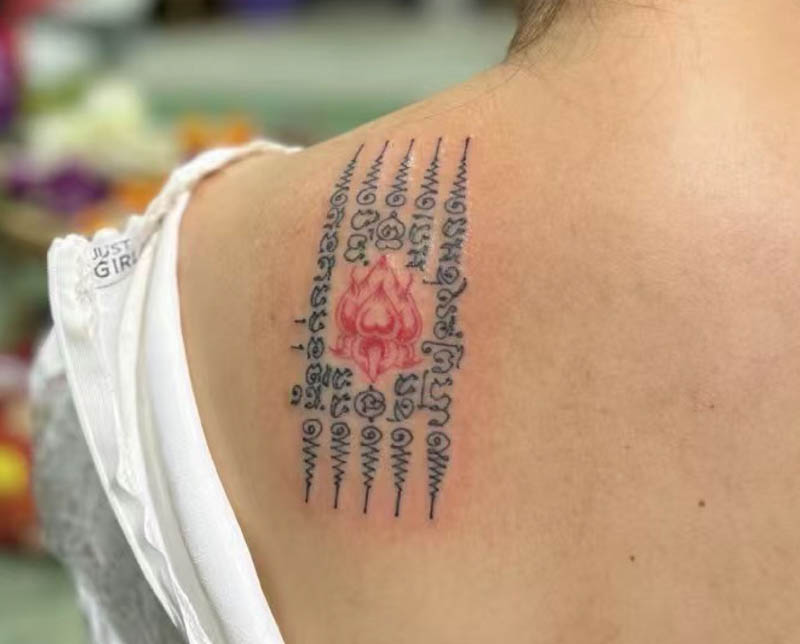
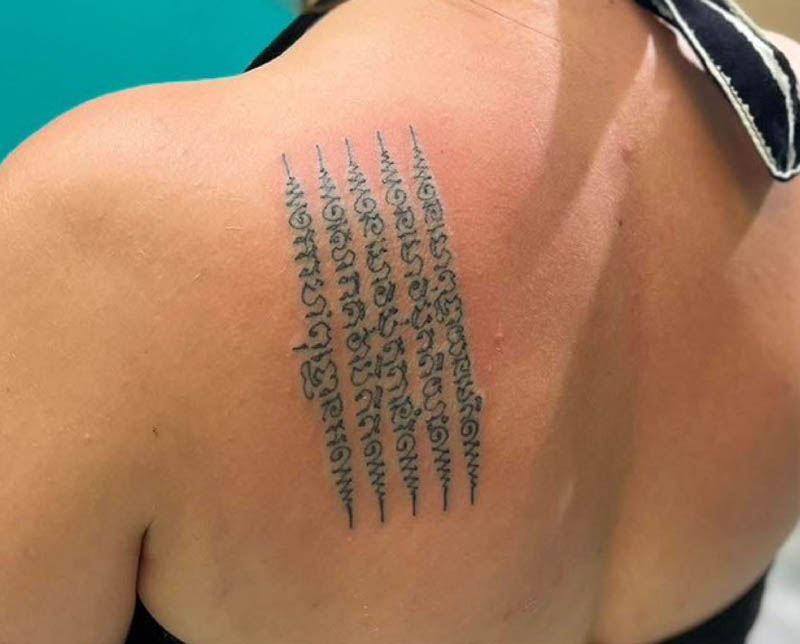
4. Rattanakosin Era (24th Buddhist Century–Present)
Early Bangkok Period:
- Masters like Luang Pu To (Wat Pradoochimpee) and Luang Por Ngoen (Wat Bang Klang) formalized the five-row structure.
- Codified yantra subtypes (e.g., Yant Maha Ud, Yant Maha Saneh).
- Modernization:
- King Chulalongkorn (Rama V) regulated esoteric practices but retained cultural traction.
- Muay Thai fighters and rural communities preserved the tradition.
- Globalization: Popularized by figures like Angelina Jolie (inked by Luang Phor Tham, Wat Suan Kaew).
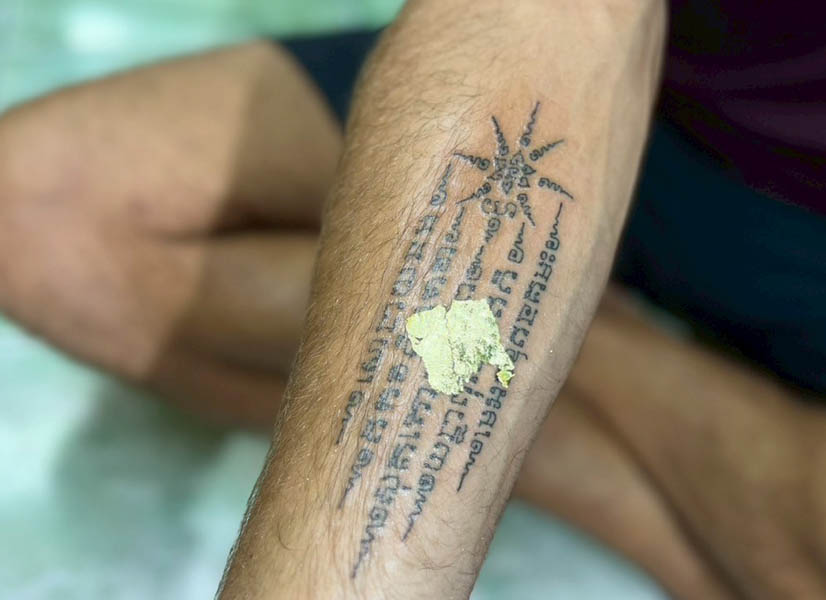
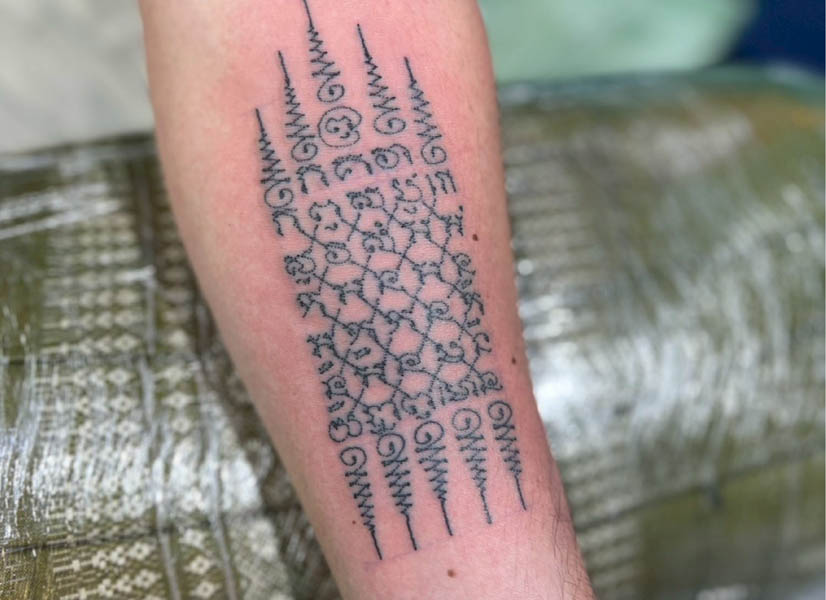
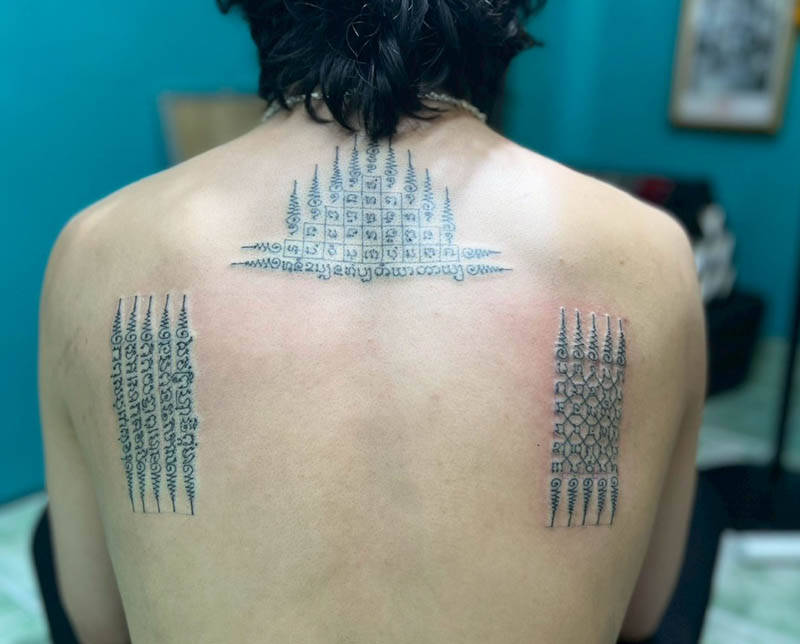

Structural Symbolism of the Hah Taew
Row Name Function Key Elements
- 1st (Base) Yant Thaat (Elemental) Stabilizes physical/mental resilience via four elements (earth, water, wind, fire). Khom script for elemental equilibrium.
- 2nd Yant Metta (Charisma) Attracts love, social favor, and prosperity. Mantras invoking deities (e.g., “Na Mo”).
- 3rd Yant Kong Grapan (Invulnerability) Grants protection from weapons/accidents. Numerological grids (Leuk Yant).
- 4th Yant Maha Amnat (Authority) Enhances leadership, victory over rivals. Symbols of power (e.g., swords, crowns).
- 5th (Summit) Yant Phutthakhun (Divine Blessing) Provides spiritual refuge and karmic merit. Buddhist paritta (e.g., Jinapañjara).




 中文 (中国)
中文 (中国)
